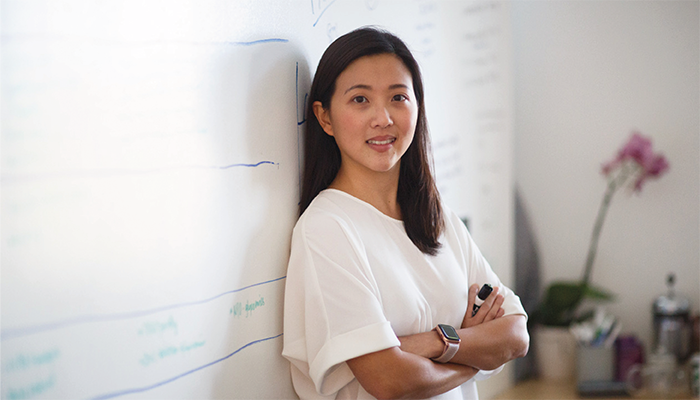This year, Scripps Research is celebrating its 100-year anniversary! Their motto? Turning scientific inquiry into innovative treatments that benefit the world. In this series of articles, we aim to shine a spotlight on some of the leading analytical scientists at Scripps – and the crucial role their work plays in delivering on Scripps' raison d’etre.
Here, we speak with Mia Huang, Associate Professor in the Department of Chemistry at Scripps, about her pioneering work in glycobiology.

Scripps enables me and my lab team to immerse in a culture of providing practical answers to real life problems – biomedical in my case. We are focused on developing a molecular understanding of important biological events so that we can open up new therapeutic avenues to treat disease. I feel quite fortunate to be in this position; to exercise creative ideas, train the next generation of scientists, all while being at a place where you can watch talented colleagues (like John Yates, Ben Cravatt, and Chris Parker) excel at their individual jobs and have fun at their work too.
My research focuses on chemical glycobiology. I am interested in developing chemistry-based solutions to reveal how a class of post-translational modifications – called glycans – regulate important biological events.
We are particularly focused on studying the functional roles of glycans that are present on individual proteins; I personally think the interplay of how proteins provide the structural context to present glycans – and how glycans in turn can modify protein structural conformation is quite marvelous.
By gaining more in depth molecular understanding, I hope to open up new therapeutic solutions to treat diseases that are controlled by these glycans. To accomplish our mission, my group is composed of individuals with backgrounds in synthetic organic chemistry, cell biology, and biochemistry.
One current project seeks to discover new cancer biomarkers in the form of differentially glycosylated proteins – these protein glycoforms that we are trying to uncover are proteins that look identical between healthy and diseased cancer cells, but the glycan post-translational modifications on them are sufficiently different. I’m excited about this project – partially because of the magnitude of the problem; finding such “needles in a haystack” is no easy feat. I also like how this problem necessitates the development of new techniques.
I am looking forward to rigorously proving that such unique protein glycoforms exist, and eventually that we can develop modalities to target them selectively.
From measurement to new biology
I think the ability to both detect events and also to assign numbers to our observations – or “measurement science” – is an integral part of what we do as chemical glycobiologists. From an NMR spectrum telling us how many and what type of protons and carbons we see in a molecule, to absorbance-based plate reader assays that tell us how much drug dose is required to kill half the given population of cells, analytical science allows us to observe trends in a much more meaningful manner and offers the opportunity to predict upcoming events. Hence, I think much of what goes into being a scientist and having “good hands at the bench” really relates to one’s ability to know what is supposed to be detected, if it can be measured experimentally, and if the experiment to detect that particular thing can be done so in a reproducible and quantifiable manner.
For a number of years now, we have been engaged in using mass spectrometry-based glycomics and proteomics to understand the structures of glycans on proteins from cells. We are developing strategies to enhance these analytical techniques to help our hunt for these unique cancer protein glycoforms from cells – these are the “what” we are trying to detect. We know that the ions resulting from these protein glycoforms can be reproducibly detected, which means we can enrich them from the rest of the glycans, proteins, and other biomolecules in cells.
How did I end up at Scripps? Well, as a child, I was very curious about human health and disease; what happens in the body and how I could help alleviate such conditions in patients. So, I wanted to become a physician.
Back then, research-based careers in the Philippines weren’t as viable, and I personally had never heard of anyone being a scientist. My idea of a scientist was similar to the cartoon character from Dexter’s Laboratory.
Halfway through college as a pre-med student, I received an opportunity to study at the City University of New York, Queens College, USA. There, for the first time, I was engaged in a research project in a laboratory setting – developing materials to combat pathogenic microbes and the growing antimicrobial resistance, and I had the chance to interact with graduate students and scientists. I think it was this experience that forced me to reflect or pause on my intended plans to become a physician – I had realized that I enjoyed being a “lab rat.”
I quite enjoyed understanding how microbes survive and what their vulnerabilities might be at the molecular level. Selfishly, I really liked the detective work of solving chemical or biological problems through experiments, and the fact that I could control variables within experiments and assign quantitative metrics to my observations really resonated with me. I thought it was such a privilege to have the time and space to be left alone to think in the lab and come up with solutions. It was an extra benefit that the thing I liked doing could potentially help solve biomedical problems and benefit patients suffering from diseases.
So, after completing my postdoctoral research at Yale and the University of California San Diego, I joined Scripps – where I’ve been for almost six years.
Mia Huang is Associate Professor in the Department of Chemistry at Scripps, USA
Headshot - Credit: Supplied by Author | Hero Credit - Images supplied by Scripps Research




